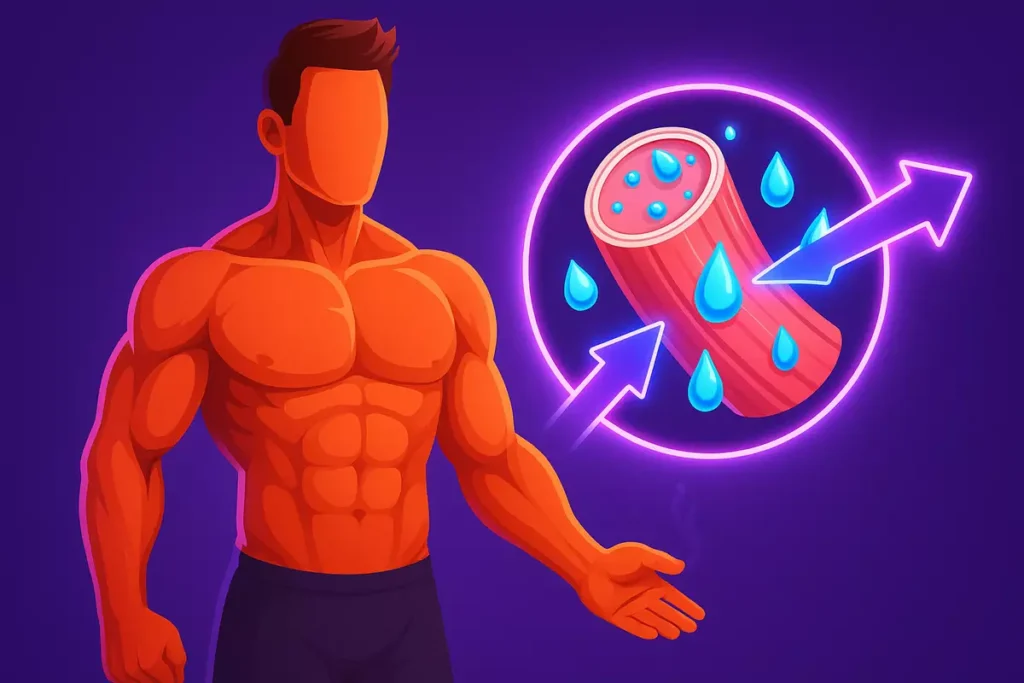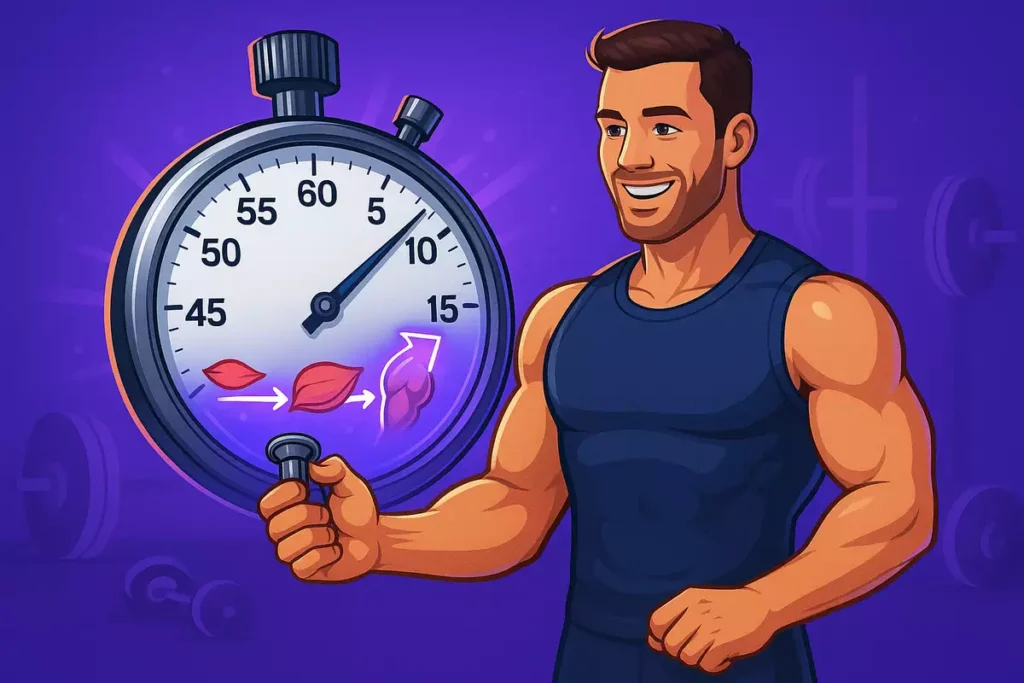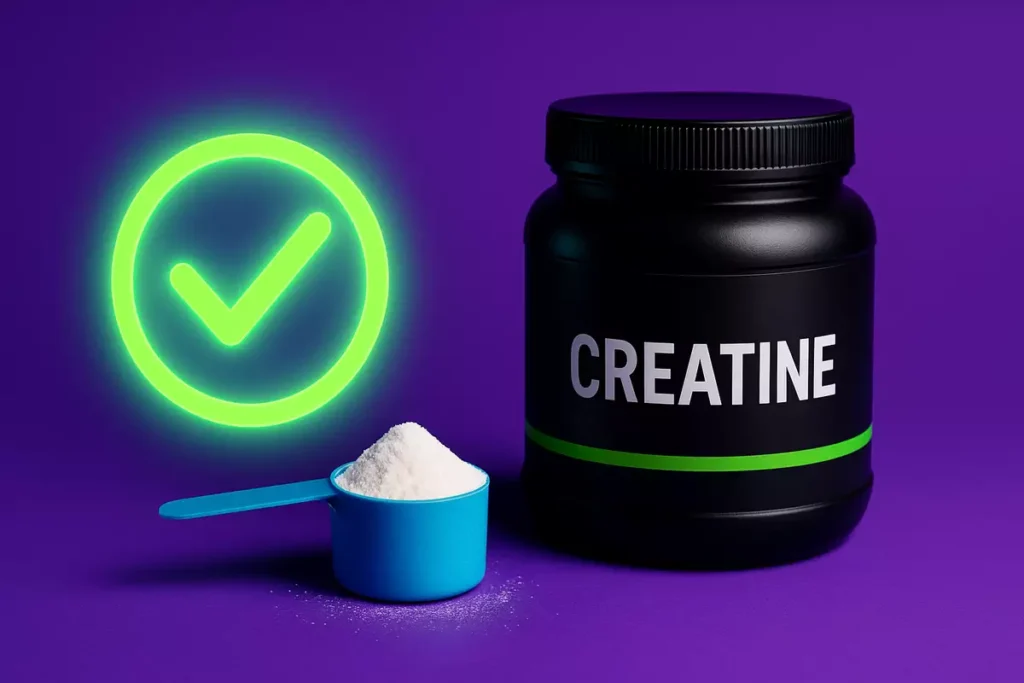Ever wondered what really happens when you stop taking creatine monohydrate?
Many lifters fear losing muscle and strength overnight. The truth is far less dramatic—but understanding it can save you stress and confusion.
From water loss and strength dips to how fast your body resets, here’s exactly what you can expect when you pause creatine—and how to bounce back fast.
Table of contents
Quick Answer
If you’ve been consistently taking creatine monohydrate and suddenly stop, don’t panic—you won’t lose the muscle you worked hard to build.
From my experience as a fitness trainer and years of using creatine myself, the first change you’ll notice is a drop in water retention inside your muscles. This can make them look slightly flatter and may reduce your top-end strength by around 5–10% within a few weeks.
But here’s the good news: you’re not losing actual muscle tissue. You can quickly regain that fullness and strength once you start supplementing again. For more details on how creatine works long-term, check out this daily creatine use guide.
What Happens in Your Body After Stopping Creatine

When you take creatine, your muscles store extra creatine phosphate, boosting ATP energy production during high-intensity training.
Once you stop, these levels naturally return to baseline in about 4–6 weeks. During this time, water inside your muscles decreases, which is why you might look slightly less pumped.
In my case, within a week of stopping, I noticed my shoulders and arms didn’t feel as full. My size and definition stayed intact—it was just a visual change.
This is completely normal because creatine naturally pulls water into your muscle cells. If you’re curious about combining creatine with other supplements for better results, you might want to read this beta-alanine, creatine, and caffeine stack guide.
Strength, Performance, and Muscle Mass Impact
Many lifters fear they’ll lose muscle when they stop creatine. That’s not true.
The performance drop is mostly from reduced water retention and slightly lower ATP energy availability—not from losing real muscle fibers.
From my experience, my heavy lifts like bench press and deadlift dropped by 5–10% after about a month off creatine. One of my clients, Marco, had a similar experience during a 2-month break.
He thought he lost muscle mass, but when we reintroduced creatine, his strength and muscle fullness bounced back quickly.
If you’re worried about losing strength completely, you can still build muscle without creatine—it just takes a little more focus on diet and recovery.
How Long Does It Take to Return to Baseline

Your body’s natural creatine levels go back to baseline in 4–6 weeks after stopping.
When I took a 4-month break, my gym performance dipped slightly during the first month but didn’t decline further.
Once I resumed creatine, my muscles filled out again in about 1–2 weeks, and my strength was fully restored within 3 weeks.
Psychological Effects and Gym Motivation
Stopping creatine often impacts your mindset more than your actual physical abilities.
I remember feeling less pumped during workouts, which sometimes made me second-guess my progress.
Sara, another client, also reported feeling less motivated because her muscles didn’t look as “full.” Once I explained it was mostly water weight and not real muscle loss, she felt relieved and stayed on track.
Should You Cycle Off Creatine?

There’s a long-standing myth that you must cycle off creatine to avoid side effects.
From both my personal use and coaching experience, there’s no scientific need to cycle off. Creatine is safe for long-term use, and stopping only causes temporary water loss and minor performance dips.
The only time I recommend stopping is for specific needs, like reducing water weight for a photoshoot or competition. Otherwise, staying on creatine provides steady benefits.
If you want to understand whether creatine works differently than pre-workouts, here’s a detailed comparison of creatine vs pre-workout.
How to Restart Creatine Safely
If you take a break and want to restart, you can simply go back to your regular 5g daily dose.
Some athletes like doing a 5-day loading phase of 20g/day, but it’s not mandatory.
After my 4-month break, I resumed with 5g daily. Within 1–2 weeks, my muscles regained fullness, and by week 3, I was lifting at peak strength again.
You can also enhance recovery by stacking creatine with casein protein. Here’s more on the benefits of stacking casein and creatine.
Final Takeaway
Stopping creatine won’t destroy your gains or undo months of training.
You may notice less muscle fullness and a slight drop in explosive power, but your muscle tissue remains intact.
From my own use and coaching experience, creatine is one of the safest and most effective supplements you can take long-term.
Even if you stop, you can quickly regain your strength and fullness once you restart. If you’re curious about different forms of creatine, here’s a guide comparing micronized vs regular creatine, and if you prefer flavored options, learn how to mix creatine with juice for better taste.



Leave a Reply